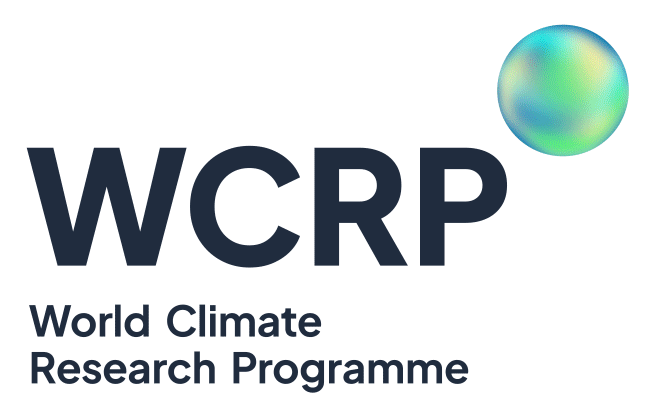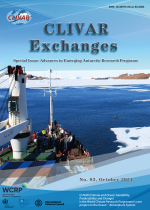The surface wave is a remedy for bottleneck biases of climate models
Climate models are core tools for understanding the mechanisms underlying climate change and making long-term and short-term predictions. The research group from the First Institute of Oceanography, Ministry of Natural Resources of China has developed a new generation of Earth System Model (FIO-ESM v2.0) and participated in the phase 6 of the Coupling Model Intercomparison Project (CMIP6), the results have been recently published in JGR Oceans, and they can contribute to solve the ever-standing bottleneck biases of most climate models (Bao et al, 2020, JGR, https://doi.org/10.1029/2019JC016036). In this note, we would like to introduce the whole story of how the omitted surface wave plays a key role in the climate system.
Surface waves traditionally have been treated separately from ocean circulation and climate systems, because the wave length (hundreds of meters), height (meters) and period (seconds) are too small compared with those of ocean circulation and climate system. However, this new publication clearly shows the dominant role of surface waves in the upper ocean and climate system through modulation of ocean mixing and air-sea fluxes.
The overestimated sea surface temperature (SST) and underestimated mixed layer depth (MLD) in the upper ocean during the summer have been a great challenge for ocean general circulation models (OGCMs), which have been tried to be solved by artificially amplified vertical mixing. Qiao et al. (2004, GRL, doi:10.1029/2004GL019824) discovered that the non-breaking surface wave plays a dominant role in the upper ocean and thus established the non-breaking surface wave-induced vertical mixing theory (Bv), which was confirmed by laboratory experiments (Dai et al. 2010, JPO, doi: 10.1175/2010JPO4378.1) and in-situ observations (Sutherland, 2013, OS, doi:10.5194/os-9-597-2013; Huang et al. 2012, JGR, doi:10.1029/2011JC007806). Qiao et al. (2004) presented the first surface wave-ocean circulation fully coupled model, and the OGCM is dramatically improved by including the non-braking wave-induced mixing of Bv. Before that, braking wave-induced mixing had been coupled into OGCMs, but showed no much improvement, since the turbulence of breaking wave can only affect the ocean in the order of wave amplitude while Bv can affect the ocean in the order of wave length. Later, Qiao’s group revealed the key role tidal mixing in ocean circulation model (Lü et al. 2008, GRL, doi:10.1029/2007GL032440), which is another story. The Bv has been applied into different OGCMs by different research groups, and all showed dramatical improvement (Lin et al. JGR, 2006, doi:10.1029/2006JC003504; Fan and Griffies, 2014, JC, doi: 10.1175/JCLI-D-13-00583.1; Wu et al. 2015, JGR, doi:10.1002/2015JC011329; NEMO since v4.0).
The forecasting ability on the track of tropical cyclones (Typhoon/Hurricane) has been much improved, however there has been a bottleneck on the intensity forecasting for several decades. Qiao’s group noticed that the sea spray from wave breaking can enhance the air-sea heat flux by a factor of 2-3 times, while Bv drops SST and then reduces the air-sea heat flux. The competition of the above two processes related to surface wave can much improve the simulation and forecasting ability of Typhoon/Hurricane intensity, especially for strong tropical cyclones (Zhao et al. 2017, JGR, doi:10.1002/2016JC012262).
For climate model development, Qiao et al. (2013, doi:10.1002/jgrc.20327) is the first attempt in the world to include the Bv into the climate system, they established the FIO-ESM v1.0 and took part in CMIP5, demonstrating that surface waves play a key role in climate system through modulating the MLD and SST. The tropical biases are reduced by about half and the overestimated SST in the Antarctic Circumpolar Current area is also dramatically improved. The climate system has three amazing responses to Bv: Firstly, Bv can increase the SST in the eastern tropical Pacific and it is a remedy for the too cold tongue in the tropical Pacific (Song et al. 2012, JGR, doi:10.1029/2012JC007931); Secondly, Bv not only deepens the summer MLD, but also shoals the MLD in winter (Chen et al. 2017, JGR, https://doi.org/10.1002/2017JC013038), both are helpful to improve climate models; And thirdly, Bv can increase the whole ocean heat content or the averaged sea temperature (Hunag et al. 2008, AOS) which is a climate drift problem for some climate models.
FIO‐ESM v2.0 was the successor of FIO‐ESM v1.0. In this version, both the dynamic processes and the model resolutions are improved. The effect of surface wave Stokes drifts on air-sea momentum and heat fluxes, the effect of sea spray from wave breaking on air-sea heat fluxes, and the effect of SST diurnal cycle on air-sea heat and gas fluxes are introduced to the climate system. Following the CMIP6 protocol, the Diagnostic, Evaluation, and Characterization of Klima (DECK) and historical experiments were conducted. FIO‐ESM v2.0 can well reproduce the climate changes with respect to Surface Air Temperature (SAT), SST, ENSO and AMOC. The historical simulation of the global annual mean SAT anomaly has the correlation coefficient of 0.92 with observations. One long-standing common model biases, the large warm SST bias at the east coast of each ocean basin is also dramatically reduced in this new system. The ENSO period within the range of 2-7 years is well reproduced with the largest variation of SST anomalies occurring during the boreal winter.
By the way, recent observation results from Qiao’s group reveal the key role of surface wave in modulation of air-sea momentum flux (Chen et al. JPO, doi: 10.1175/JPO-D-18-0266.1) and Albedo (Huang et al. JGR, https://doi.org/10.1029/2018JC014444), which have high potential to further improve ocean and climate models.
Dr. Fangli Qiao, an emeritus member of the CLIVAR Ocean Model Development Panel (OMDP), has been leading his research group for more than 20 years on ocean and climate model development. His scientific findings of the non-breaking surface wave-induced vertical mixing theory and the key role of surface waves in air-sea fluxes, the development of the surface wave-tide-circulation coupled model of FIO-COM, the development of the atmosphere-ocean-wave coupled Typhoon/hurricane model of FIO-AOW, and the development of the earth system models of FIO-ESM v1.0 and 2.0, are great contributions to ocean and climate model community. All above models can be simply called as Qiao’s models.














Add new comment